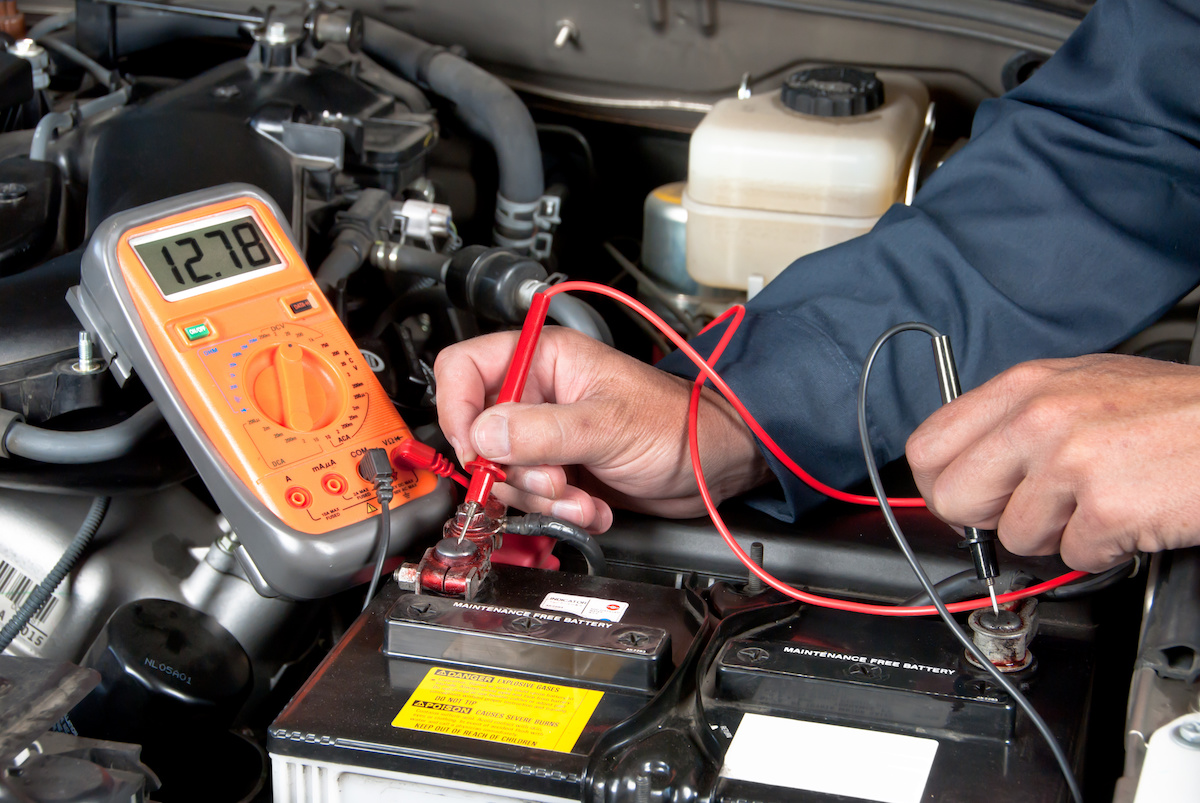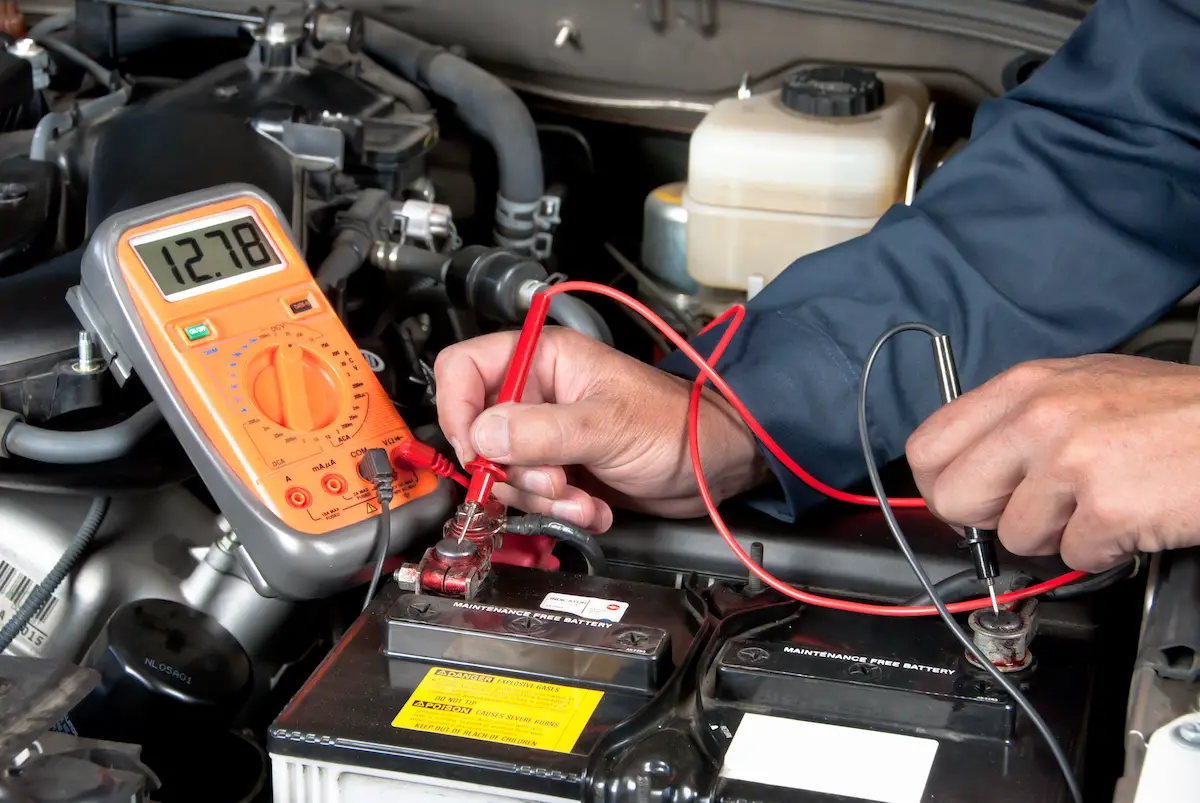As a driver, you might have wondered whether your car battery charges when the engine is idling. It’s a valid question considering that idling is a common scenario in traffic jams, stoplights, or when waiting for someone. The answer, however, is not as straightforward as a simple yes or no.
To understand how car batteries work, you need to know that they are responsible for starting the engine and powering the car’s electrical systems. They are charged by the alternator, which is driven by the engine. When the engine is running, the alternator generates electricity and sends it to the battery. But does this mean that the battery charges when the engine is idling? Let’s delve deeper into the topic to find out.
Does Car Battery Charge When Idling?
Yes, a car battery charges when idling, but it charges at a slower rate than when the car is being driven. The alternator is responsible for charging the battery, and it needs to spin at a certain speed to generate enough power. When the car is idling, the alternator is spinning at a lower speed, which means it is generating less power. It is recommended to drive the car for at least 30 minutes to fully charge the battery.

Does Car Battery Charge When Idling?
When you’re driving your car, the alternator charges the battery. However, when your car is idling, the alternator doesn’t produce enough electricity to charge the battery. So, does your car battery charge when idling? The answer is not straightforward, and it depends on several factors. Let’s dive deeper into this topic and find out the answer.
How Does an Alternator Work?
An alternator is a device that generates electricity to power the electrical systems of your car and charge the battery. When the engine is running, the alternator spins and generates electricity. As the alternator produces electricity, it also charges the battery.
The alternator is connected to the engine through a belt. When the engine is running, the belt turns the alternator. The alternator then converts the mechanical energy from the engine into electrical energy. The electrical energy produced by the alternator is then used to power the electrical systems of the car and charge the battery.
Why Doesn’t the Battery Charge When Idling?
When the engine is idling, it doesn’t produce enough mechanical energy to turn the alternator at a high enough speed to generate electricity. As a result, the alternator doesn’t produce enough electricity to charge the battery.
In addition, when the engine is idling, the electrical systems of the car are still drawing power from the battery. The alternator isn’t producing enough electricity to keep up with the demand, so the battery is slowly being drained.
When Does the Battery Charge When Idling?
There are a few situations where the battery may charge when idling. One of those situations is when the engine is idling, but the car is in neutral or park. When the car is in neutral or park, the engine doesn’t have to work as hard, so it can spin the alternator faster. As a result, the alternator generates more electricity, which can charge the battery.
Another situation where the battery may charge when idling is when the car has a high-output alternator. A high-output alternator produces more electricity at lower speeds, so it can charge the battery even when the engine is idling.
The Pros and Cons of Idling to Charge the Battery
While idling to charge the battery may seem like a simple solution, there are some pros and cons to consider.
Pros:
– Charging the battery while idling can help prevent the battery from dying.
– It’s a quick and easy solution if you need to charge the battery quickly.
Cons:
– Idling wastes gas and increases emissions.
– Idling for long periods can cause damage to the engine and other components.
Alternatives to Idling to Charge the Battery
If you don’t want to idle your car to charge the battery, there are a few alternatives.
One alternative is to use a battery charger. A battery charger is a device that plugs into an electrical outlet and charges the battery directly. Battery chargers are available in several types and sizes, so you can find one that works for your car.
Another alternative is to drive your car for a longer period. When you’re driving, the alternator generates more electricity, which can charge the battery. So, if you’re having trouble charging your battery while idling, taking a longer drive may help.
The Bottom Line
While your car battery may charge when idling in certain situations, it’s not a reliable way to charge the battery. If you’re having trouble charging your battery, it’s best to use a battery charger or take a longer drive. Idling your car to charge the battery should be a last resort, as it wastes gas and can cause damage to your car.
Contents
Key Takeaways: Does Car Battery Charge When Idling?
- Idling alone may not be sufficient to fully charge a car battery.
- The alternator is responsible for charging the battery while the engine is running.
- If the alternator is not functioning properly, idling may not charge the battery at all.
- Idling for extended periods may cause harm to the engine and other components.
- Regular maintenance and inspections can help ensure proper battery and alternator function.
- If the battery is consistently failing to hold a charge, it may be time for a replacement.
In conclusion, while idling can provide some level of battery charge, it is not a reliable or effective method for fully charging a car battery. It is important to prioritize regular maintenance and inspections to ensure proper function of the alternator and battery, and to consider replacement if necessary.
Will my car battery charge if I leave the engine running?
As a professional writer, I am confident in stating that the question of whether a car battery charges when idling is a common one among car owners. The answer to this question is not as straightforward as it may seem. While the battery does receive a charge when the car is idling, the amount of charge it receives is not sufficient to fully recharge a dead battery.
It is important to note that a car battery’s primary function is to start the engine. When the engine is running, it provides power to the alternator, which then charges the battery. However, when the car is idling, the alternator is not producing enough power to fully charge the battery. In fact, idling for extended periods of time can actually drain the battery, as the car’s electrical systems are still drawing power. Therefore, while idling can provide some charge to a battery, it is not a reliable method for fully recharging a dead battery.
In conclusion, while idling can provide some charge to a car battery, it is not a reliable method for fully recharging a dead battery. If you find yourself with a dead battery, it is best to use a battery charger or jumper cables to fully recharge the battery. In addition, it is important to maintain your car’s battery by regularly checking its charge level and ensuring that it is properly connected and free of corrosion. By taking these steps, you can ensure that your car’s battery is always ready to start your engine when you need it.

